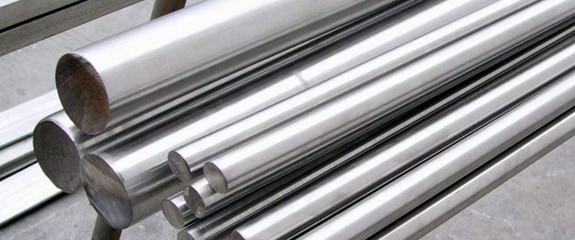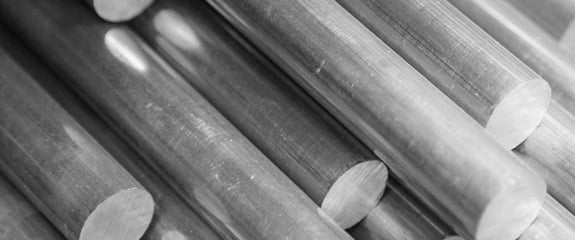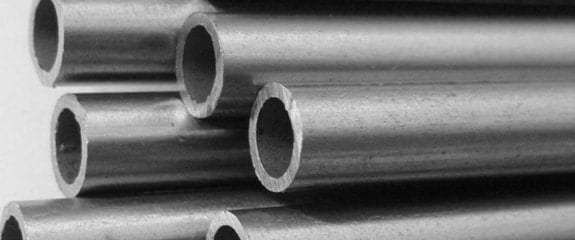Nickel vs Stainless Steel: Which Wire Mesh Material Is Right for Me?
Both stainless steel and nickel are two materials that are common in countless industries far and wide. Each material carries its own set of benefits and its own set of downfalls that, in the grand scheme of things, dictate which one you consider.
Now, while woven wire mesh is synonymous with stainless steel, it's important to know that other materials like nickel can be used to construct your wire mesh. That said, it's also important to know the differences between the two to ensure you use an alloy that is right for you.
As W.S. Tyler has woven mesh for over 140 years, we have the know-how needed to provide you with everything you need to build a wire mesh solution that gives you peace of mind.
With that, this article will cover the following points to give you a better idea of how stainless steel wire mesh and nickel wire mesh compare:
- What stainless steel is
- What nickel is
- How stainless steel and nickel compare
- which alloy is suitable for you
What Is Stainless Steel?

Stainless steel is a series of alloys consisting of specific carbon and chromium levels. This composition of elements allows stainless steel to have a relatively high resistance to corrosion and extreme temperatures.
Unfortunately, this high resistance to heat makes stainless steel alloys hard to weld when certain lower temperature weld techniques are used as they absorb the heat.
That said, in the world of stainless steel, there are nine prominent variants: 304, 309, 310, 316, 317, 318, 321, 330, 347. However, in the world of woven wire mesh, 304 and 316 stainless steel is predominantly used.
What Is Nickel?

Nickel is a natural alloy found on the periodic table of elements and is often used for special applications that call for alloys that fall under stringent criteria. It is a wire mesh alloy that, like stainless steel, is known for having a high resistance to corrosive environments.
When working with woven wire mesh, nickel 200 and Monel (1) alloy 400 are widely used.
How Do Stainless Steel and Nickel Compare?
When it comes down to brass tacks, the difference between stainless steel wire mesh and nickel wire mesh ultimately comes down to performance.
As stated above, the natural resistance to high temperatures seen in stainless steel alloys is proven to hinder their ability to be welded and hinder the effectiveness of heat treatment. That said, you can combat this obstacle by using low carbon alloy.
Regardless, if you weld your mesh or not, it should be noted that the surface of stainless steel is known to become discolored when exposed to high heat as its heat resistance does not entail high-temperature oxidation.
Nickel doesn't have this issue as it does not have the same resistance to heat. In fact, it is widely applied for its heat conductivity as well as for its electrical and magnetic conductivity.
Additionally, nickel's corrosion resistance is excellent for special circumstances, such as applications that subject the alloy to acids or lyes. This is particularly true when halogenides, caustic alkalines, and various organic compounds are present.
Which Alloy Should I Use?
The alloy you use depends on the needs of the application your wire mesh is subjected to. If your application calls for a mesh that must meet specific criteria or requires heat, electrical, or magnetic conductivity, nickel wire mesh should be used.
That said, if you wish to implement a wire mesh that delivers an ideal balance of heat resistance, corrosion resistance, and durability, a stainless steel alloy should be used.
Now, taking a deeper dive, if the mesh will be subject to more harsh, corrosive conditions, 316 stainless steel should be employed. On the other hand, if the mesh will be in contact with non-corrosive material, 304 stainless steel is most likely the more practical material.
Ensure the Best Possible Alloy To Achieve Desirable Results
Stainless steel and nickel are two alloys that are commonly used to construct woven wire mesh. Stainless steel provides the perfect balance of heat and corrosion resistance, whereas nickel delivers unique heat, electrical, and magnetic conductivity to specialty applications.
But as it is crucial to understand the differences between these two materials, it's just as important to understand the wire mesh can be constructed from a broad spectrum of alloys that you should have an understanding of. This is will you to implement a wire mesh that you can truly say you're confident in.
W.S. Tyler understands that you rely on wire mesh solutions that are tried and true. For this reason, we strive to learn every aspect of your operations to point you in the direction of optimal solutions.
We put the following article together to give you a better idea of what alloys can be used to weave wire mesh so you can implement wire mesh components you can trust:
About Ronnie Brown
Ronnie is the Content Writer for W.S. Tyler and has four years of experience as a professional writer. He strives to expand his knowledge on all things particle analysis and woven wire mesh to leverage his exceptional writing and graphic design skills, creating a one-of-a-kind experience for customers.




